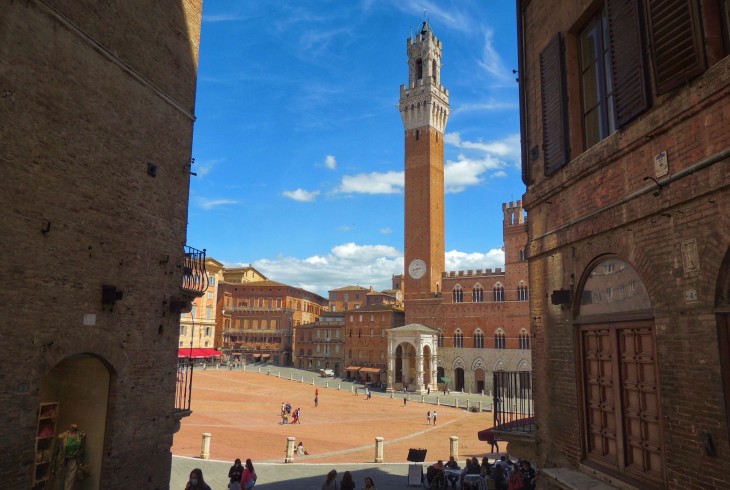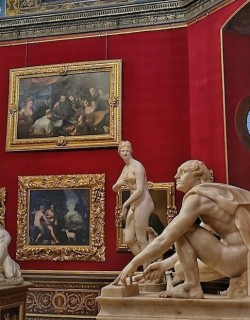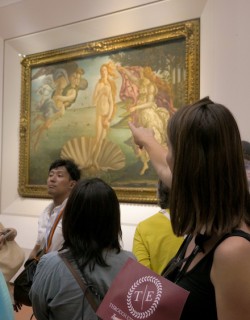Choosing my favorite small city in Italy is no easy task. There are so many fabulous destinations that make perfect weekend getaways on the peninsula - but if I simply had to pick one over all the others then it would be Siena. Located in the midst of the Tuscan countryside surrounded by rolling hills, vineyards and olive groves, this amazing city offers an unmatched window into Italy’s medieval past.
Walking through Siena is like stepping into a beautifully-crafted time capsule: the fortune of the city reached its peak way back in the 1300s, and it genuinely feels like not much has changed since then. The entire historic center is protected by UNESCO World Heritage status, and it’s easy to see why.
But Siena isn’t living off past glories alone. The city is one of the most vibrant cultural hubs in Italy, never so dramatically showcased as during the twice-yearly Palio, a horse race so spectacular that it has to be seen to be believed. The local culinary scene, meanwhile, will leave even the most demanding foodie drooling. For these reasons and more, you need to pay a visit to Siena if you want to experience authentic Italian culture at its very best.
Find out everything you need to know about Italy’s medieval gem and how to visit it with our guide!
A Short History of Siena
According to longstanding local lore, the mythical origins of Siena can be traced back to the very same events that led to the founding of Rome. The legend goes that the city was established by Senius and Aschius, the orphaned sons of Remus who were forced to flee Rome after their father was murdered by their uncle Romulus.
The tale is a fiction that was promoted to give some decent historical provenance to the upwardly mobile city during its rise in the Middle Ages. In reality Siena was little more than an outpost in antiquity, and owed its later prosperity to the good fortune of lying on the Via Francigena pilgrimage route that linked northern Europe to Rome. This crucial trade route brought pilgrims and merchants to Siena’s gates, and with them wealth and influence.
By the Middle Ages, Siena had become a powerful city-state expert in the arts of banking, trade and commerce, and developed a complex and advanced system of government to administer the commune. The ruling council of nine promoted innovative urban design, commissioned spectacular Gothic architecture and patronized some of the greatest artists of all time to give visual form to Siena’s espoused ideals of harmony, justice, and civic pride.
By the 14th century this prosperous and beautiful town was the envy of Europe, proudly independent of the powerful empires that surrounded it. But Siena’s decline was swift - ravaged by the Black Death in the 1340s, the city was unable to stave off the hostile advances of neighboring Florence. Yet even as its golden age passed, Siena remained remarkably intact over the centuries to come, retaining more of its medieval character than anywhere else in Italy.
Top Things to See in Siena
Piazza del Campo
Piazza del Campo is Siena’s beating heart, a magnificent, fan-shaped square that epitomizes the ingenuity of Siena’s medieval town planners. The piazza is dominated by the stately Torre del Mangia and Palazzo Pubblico, and is hemmed in by elegant palaces on all sides. Civic ordinances strictly controlled the design of buildings on the piazza, leading to a harmonic design rarely seen in medieval cities. Twice a year, the square transforms for the thrilling Palio, a fiercely competitive horse race that pits the city’s 17 rival contrade, or neighborhoods, against each other.
Palazzo Pubblico
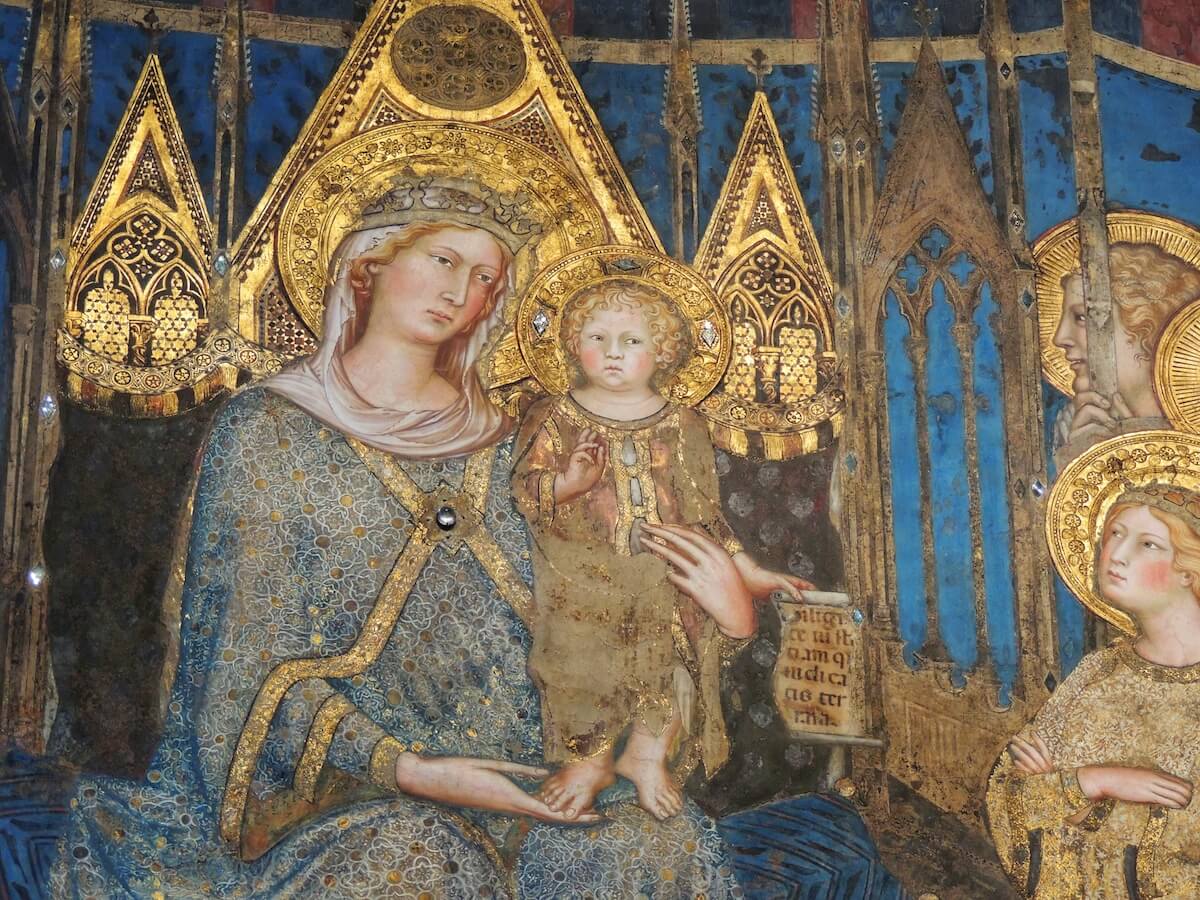
An imposing mountain of brick looming over the Campo, the Palazzo Pubblico is where the city’s ruling council presided over Siena’s glittering golden age. Siena’s finest artists were commissioned to celebrate Siena’s cultural identity and values on the walls of these historic halls, and you can still see their handiwork today. Highlights include Simone Martini’s majestic Maestà, where a radiant Virgin is encircled by saints, and his striking portrait of local military commander Guidoriccio da Fogliano. But the crowning masterpieces here are Ambrogio Lorenzetti’s amazing Allegories of Good and Bad Government, portraying Siena’s ideals and civic life in highly-detailed scenes that plunge us straight into the distant world of 14th-century Tuscany.
The Duomo
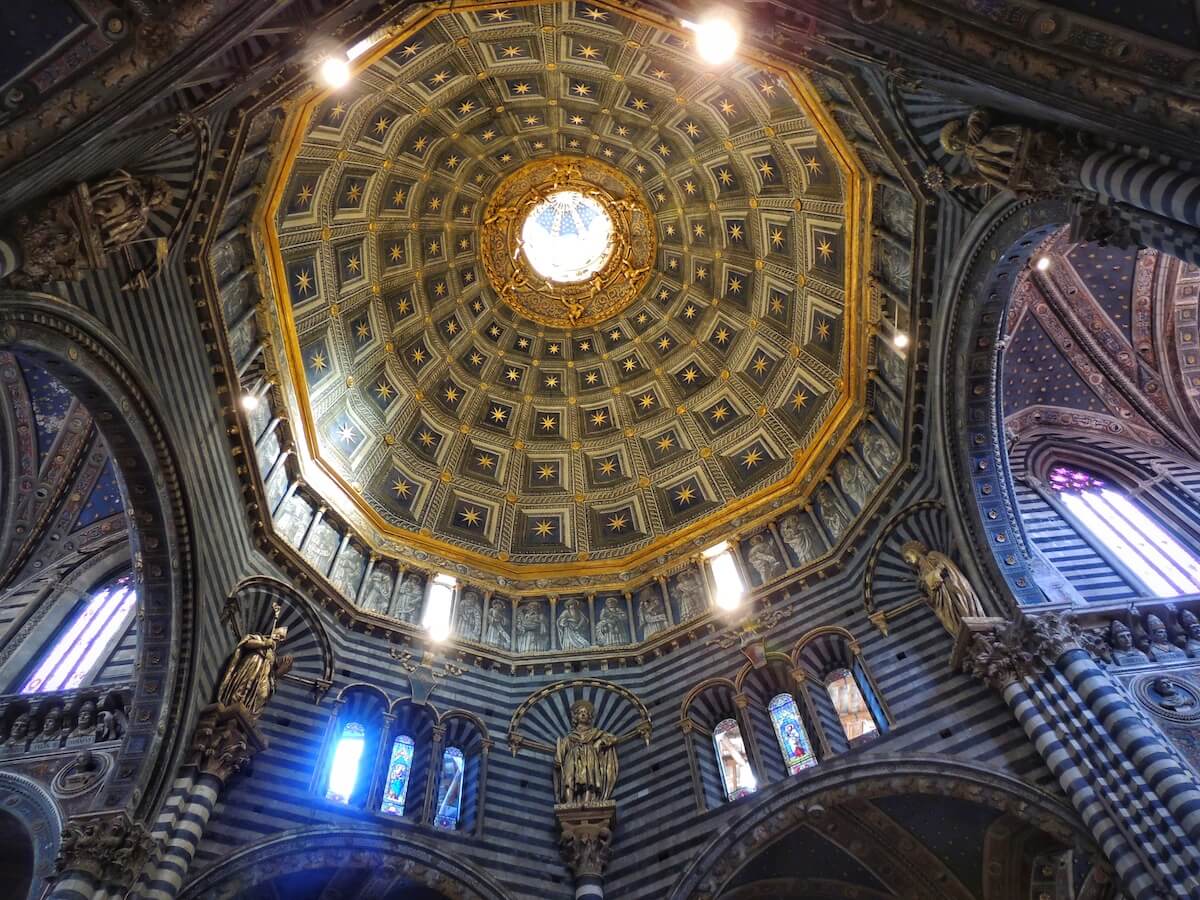
Siena’s remarkable Duomo is arguably the most beautiful church in Italy. Its intricate facade is a marvel of Romanesque-Gothic craftsmanship, adorned with prophets and patriarchs by the masterful Giovanni Pisano. Inside the hits keep on coming: a breathtaking mosaic floor crafted over centuries, sculptures by Michelangelo and Donatello, Nicola Pisano’s breathtaking sculpted pulpit…and that’s just for starters. You could spend hours here and barely scratch the surface - testament to Siena's heritage as one of the world's finest centers of art.
Museo dell’Opera del Duomo
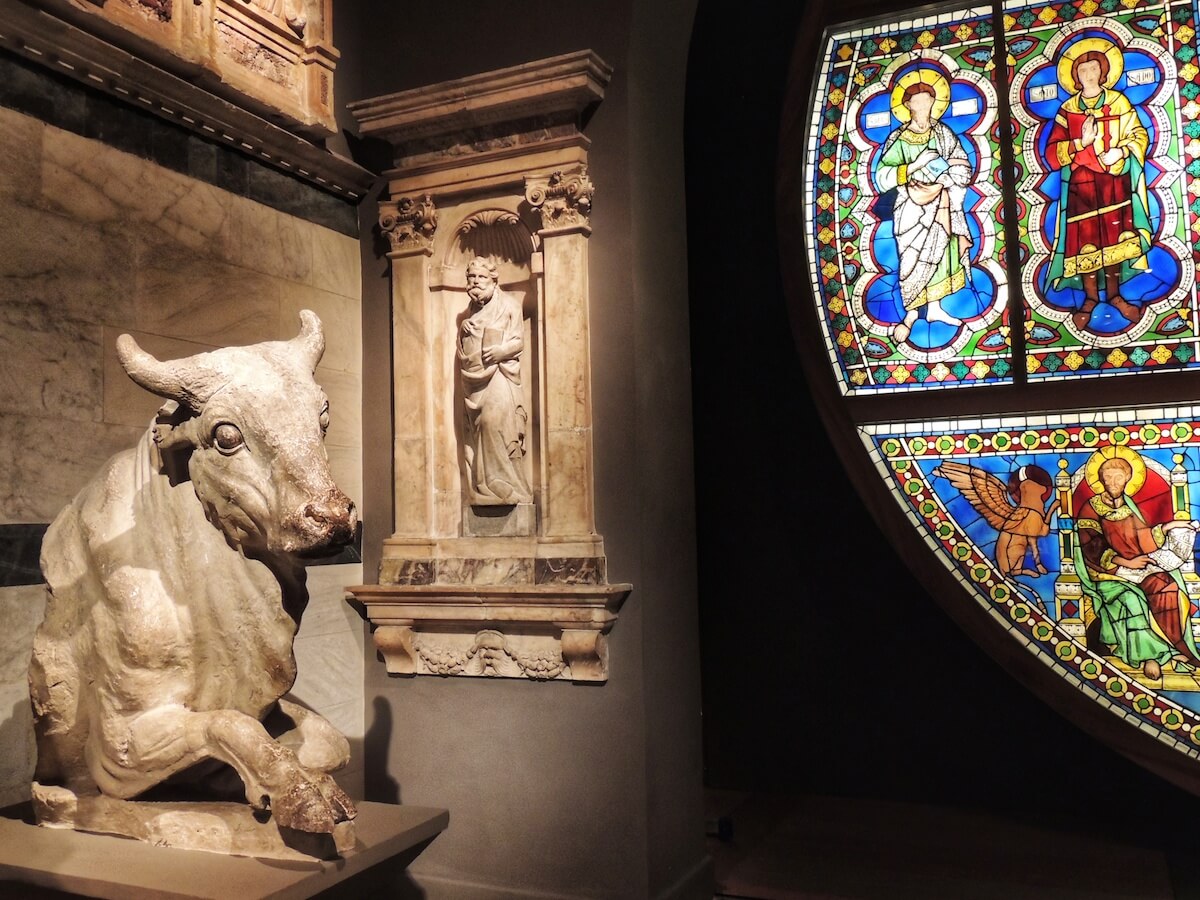
The Museo dell’Opera del Duomo conserves numerous artworks originally created for the cathedral. Its crown jewel is Duccio di Buoninsegna’s Maestà, a monumental altarpiece painted in 1308–11, featuring the Virgin and Child surrounded by angels and a narrative of Christ’s Passion on its reverse. Here too are Giovanni Pisano’s original sculptures for the Duomo’s façade.
Piccolomini Library
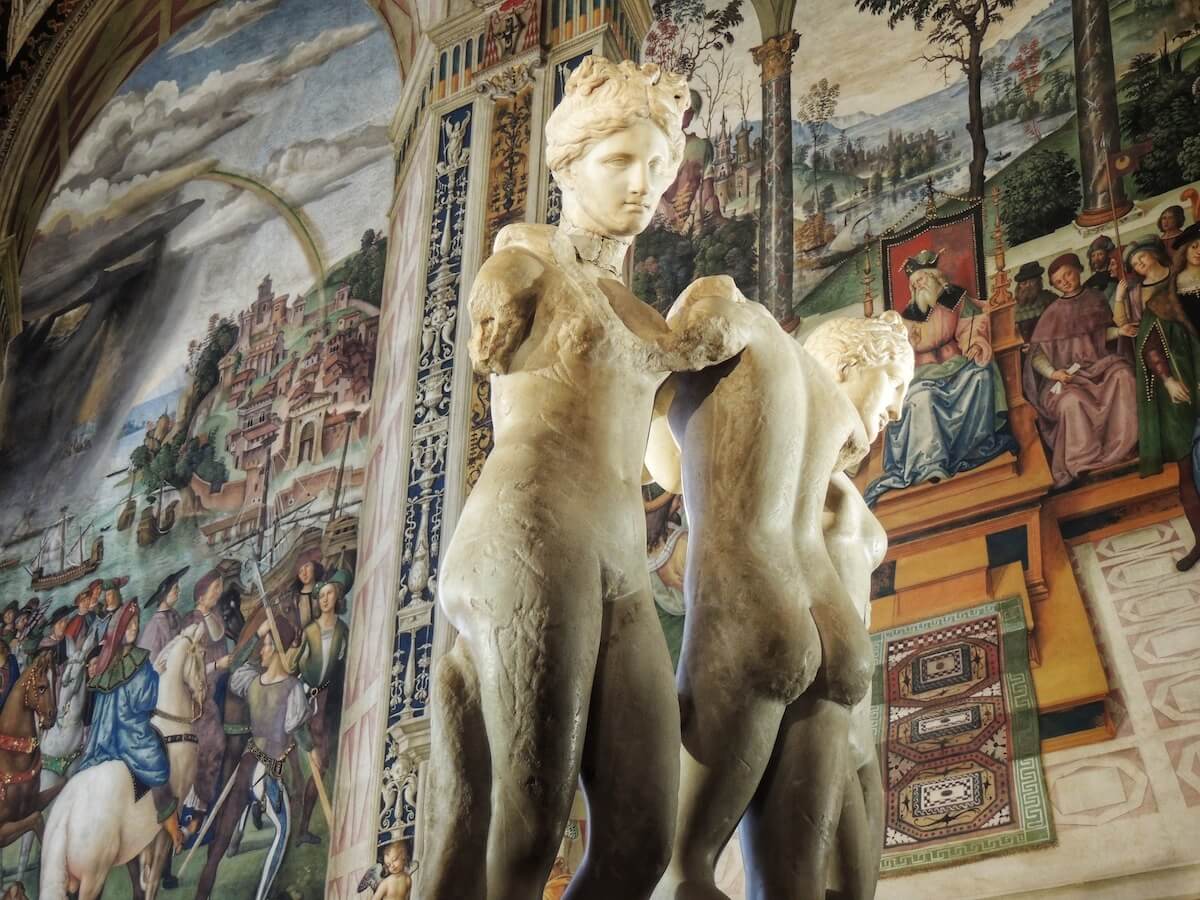
Located within the Duomo, the Piccolomini Library is testament to the legacy of one of Siena’s most powerful families. Built in 1492 by Francesco Todeschini Piccolomini - who later became Pope Pius III - to honor his uncle, Pope Pius II, the library was designed to showcase the humanist’s extraordinary book collection. Todeschini commissioned Pinturicchio to adorn the library with vivid frescoes depicting scenes from Pius II’s life.
For our full guide to what you need to see in Siena, check out our article here: A Weekend in Siena.
Top Things to Do in Siena
Trace the life of Italy’s patron Saint Catherine
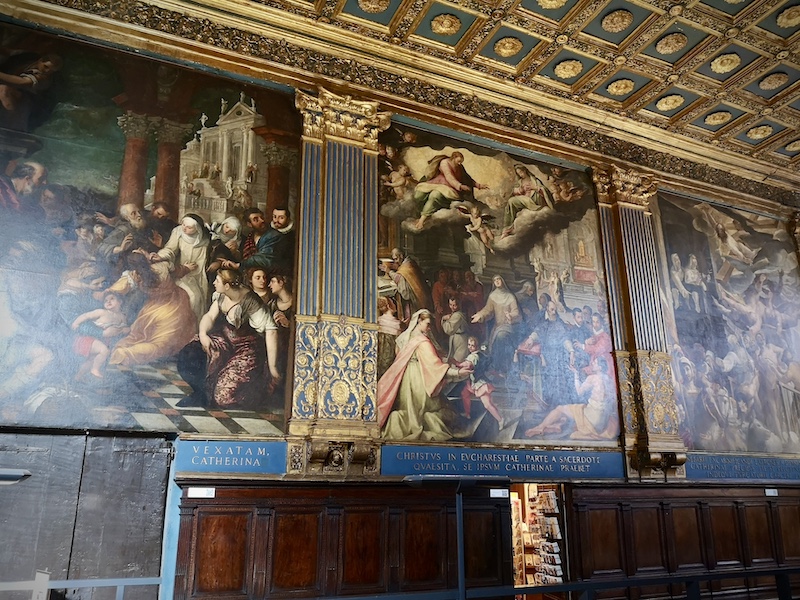
When in Siena, you need to pay your dues to local hero and patron saint Catherine. Catherine was a hugely influential figure in her lifetime, and was instrumental in engineering the return of the papacy to Rome after the long Avignon exile. Begin at the Sanctuary of Saint Catherine, her childhood home turned shrine where a fabulous Renaissance fresco traces her life and works. Then head up the hill to the imposing church of San Domenico, where Catherine’s head occupies pride of price - the macabre relic was spirited away from Rome after the saint’s untimely death by a contingent of devoted Sienese pilgrims.
Climb the Torre del Mangia
Soaring above the Palazzo Pubblico, the 102-meter Torre del Mangia was built between 1338 and 1348. The tower owes its quirky name to its first bellringer, Giovanni di Balduccio, whose habit of spending his earnings as soon as he received them earned him the nickname “il Mangiaguadagni,” or "the Wages Eater." It’s well worth climbing the tower for breathtaking views of Siena’s rooftops and the Tuscan countryside beyond.
Witness Siena’s shattered ambition at the Facciatone
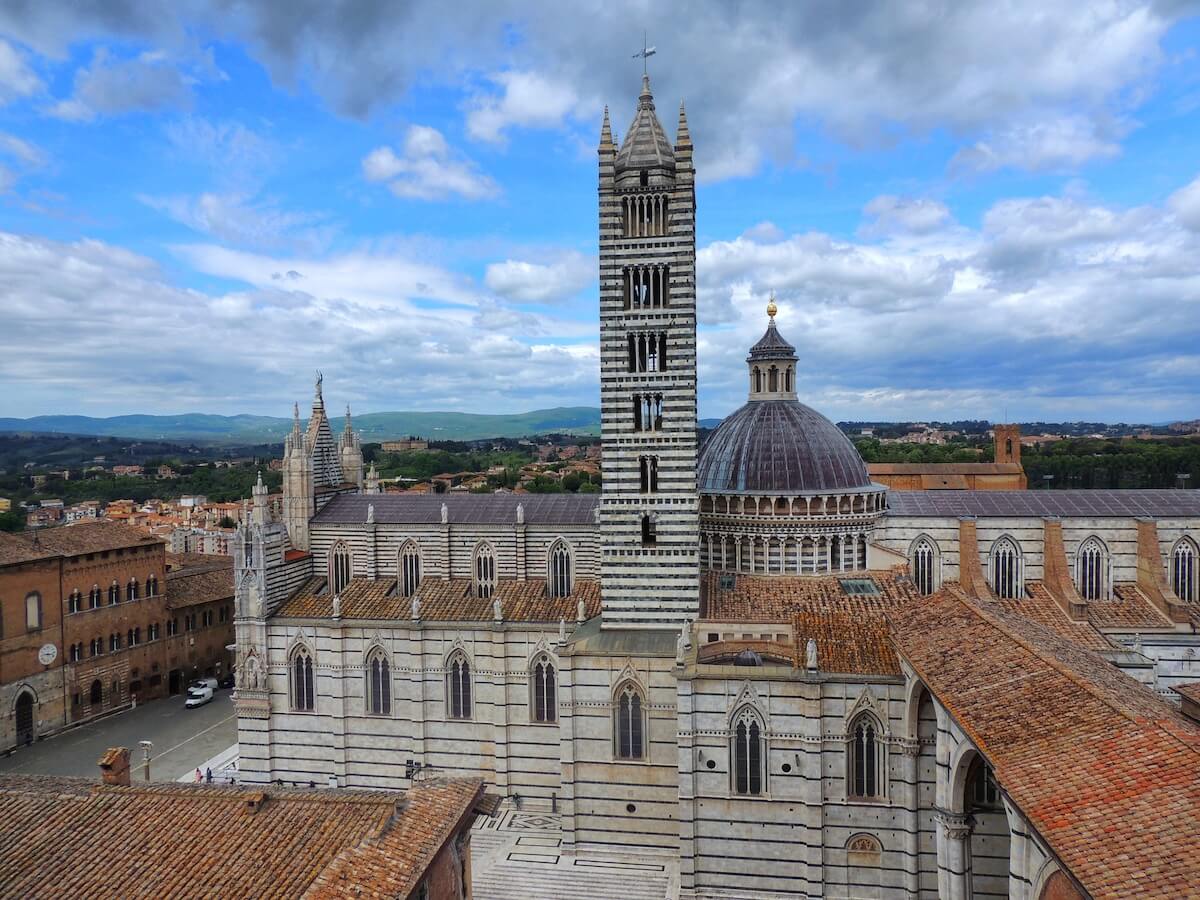
Amazingly, Siena’s massive Duomo could have been even grander had 14th-century plans for a mind-boggling expansion plan succeeded. In 1339, at the peak of Siena’s prosperity, the city aimed to double the cathedral’s size, transforming the entirety of the existing church into the transept of a grand “Duomo Nuovo.” The Black Death struck in 1348, however, halting construction and changing Siena’s fate forever. You can climb the Facciatone, as it’s known, to get an up-close look at the unfinished facade and to enjoy an excellent look at the Duomo’s architecture from on high.
Visit one of the world’s oldest hospitals at Santa Maria della Scala
The vast complex of Santa Maria della Scala originally served as a 13th-century hospice for pilgrims traveling the Via Francigena. Over time, its brief expanded to providing medical care for Siena’s poor and orphans, making it one of Europe’s earliest hospitals as we understand that term today. Fascinating 15th-century frescoes in the Pellegrinaggio (Pilgrim’s Hall) depict early-modern medicine at work, and will make you very glad for the advances in patient care made since then!
Where to Stay in Siena
Although a relatively small city of just over 50,000 inhabitants, Siena is divided into no fewer than 17 historical neighborhoods, or contrade. Most of these are extremely small; despite the often fierce rivalries that persist between them, as a visitor you often won’t know when you’re passing from one to another - so they won’t help you much in your attempts to navigate your way around the city! Basing our recommendations on landmarks rather than contrade, below we’ve collated some of our favorite areas to stay in when visiting Siena.
- Piazza del Campo and around: Located right in the buzzing heart of the action, the area in and around Piazza del Campo is the best choice for most first-time visitors as you’ll never be more than a few minutes walk from the city’s main attractions and restaurants. You’ll be surrounded by beautiful medieval architecture, and more than likely find yourself staying in a hotel or apartment housed in a grand historic palace. The downside? Such atmospheric accommodation generally doesn’t come cheap.
- San Domenico and Fontebranda: Just outside the central core, the areas near the Basilica di San Domenico and Fontebranda provide quieter stays while still being within easy walking distance to major sights. This area is ideal if you prefer a less crowded atmosphere but still want to be close to everything. The main contrade here are Oca and Drago. As this area of the city is located on a natural hill, from here you’ll also be able to enjoy some of the best views in Siena.
- Porta Camollia and around: The area in and around Siena’s northern gate is an excellent solution if you’re looking to save some money, as accommodation around here tends to be cheaper than right in the center. As the neighborhood is primarily residential, Porta Camollia also retains an appealing local feel. As an added bonus, Porta Camollia is the closest part of the old city to the train station - but it’s still just a pleasant 15-20 minute stroll to the Campo.
- East of Piazza del Campo: Tucked away beneath the city walls in the east of the historic center just a 5-10 minute stroll from the Campo, the leafy Giraffa and Leocorno contrade are home to some of Siena’s most imposing medieval monuments including the church of San Francesco. The narrow cobbled lanes here conceal great bars and restaurants too.
- Duomo and around: Dominating the southern end of town is the Aquila (meaning eagle) contrada, centered on Siena’s iconic Duomo. This part of the city is arguably the richest in artistic treasures: in addition to the Duomo and Baptistery, it’s here too that you’ll find Santa Maria della Scala and the Pinacoteca Nazionale (painting gallery). It’s also home to an array of great restaurants heading south into Onda, around Via di San Pietro.
What is the Palio, and How Can I Watch it in Person?
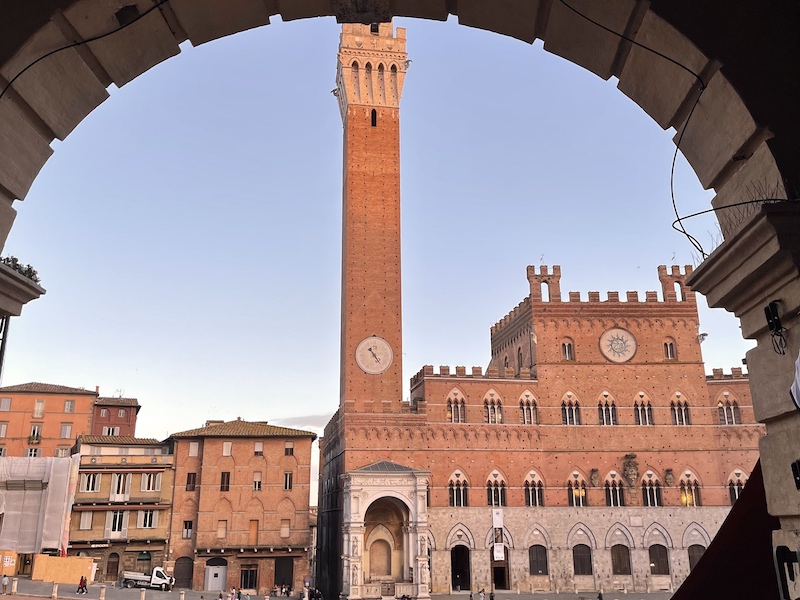
The Palio di Siena is a daredevil, centuries-old horse race held in the Piazza del Campo twice each year - on July 2 and August 16. More than just a race, the Palio is a fierce battle of neighborly one-upmanship contested between Siena’s 17 contrade. The atmosphere leading up to the Palio is febrile to say the least, and on race day thousands gather in the center of the piazza to watch as jockeys race bareback around the piazza’s uneven, dirt-covered track. Thanks to the Campo’s tight corners, sharp slope and the number of horses involved (10 of the 17 contrade take part in any given race), the Palio is as exhilarating as it is unpredictable. Cheating is rife, which only adds to the fun.
To watch the Palio in person, you’ll need to arrive hours before the race to stake out a spot in the free-standing area within the piazza. It gets extremely crowded, but it’s well worth it. Alternatively, you can book a seat on one of the balconies or terraces that look out onto the square, but expect to pay a hefty premium, as these seats are in high demand and often sell out months in advance. If you’re in Siena on race day, don’t miss the colorful parade beforehand, where each contrada marches in medieval costumes.
What to Eat in Siena
As you might expect given its location, Siena’s cuisine is classic Tuscan fare. If you’ve visited Florence then you’ll certainly be familiar with a number of the dishes that you’ll find on almost every menu here, including ribollita, papa al pomodoro, pappardelle wild boar ragu and that grand daddy of the grill, the bistecca fiorentina. The standard of gastronomy in Siena is exceptionally high, however, so even if you’ve tried these recipes before it’s well worth ordering them here too.
Siena’s food culture also boasts some dishes that you won’t easily find elsewhere. Cinta Senese is a local heritage breed of pork that’s used in everything from pasta sauces to filet steaks and is famous for its rich flavor. Pici all’aglione, meanwhile, is a homemade pasta served with a sauce made from a locally grown giant garlic.
Where to Eat in Siena
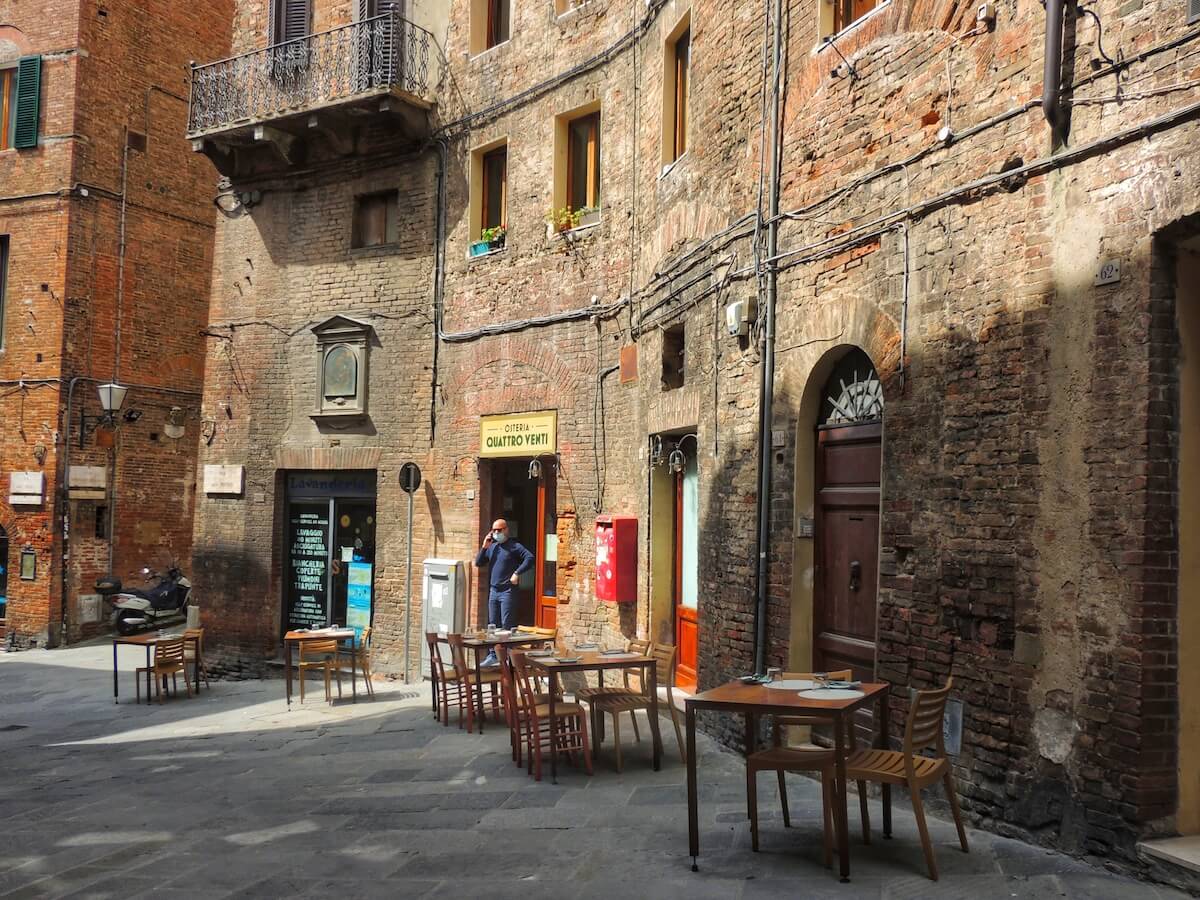
- Osteria Nonna Gina: Down-home cooking at its best is the calling card of this traditional osteria where checked tablecloths, wood-paneled walls and big bowls of pasta are par for the course. Try the house-speciality stuffed gnocchi, bathed in a secret sauce known only to the chef.
- Al Boccon di Bòcco: Tucked away in the warren of streets between the Duomo and Fontebranda, panino lovers flock to this little deli where Alberto whips up the finest sandwiches in town. Wash it down with a little glass of wine at the inflation-busting price of €1.
- Prètto Prosciutteria e Convivio: Everything is perfectly judged at this casual yet hip place specializing in platters of local meats and cheeses alongside more substantial dishes like local specialty lampredotto. A superb selection of wines by the glass rounds out the picture.
- Osteria degli Svitati: We love this little no-frills place for its excellent command of Tuscan classics like ribollita and papa al pomodoro. It’s also a great place to try pici all’aglione, a type of garlic cultivated in the Val di Chiana known for its huge size and very delicate flavor.
- Osteria Il Vinaio: This is our go-to spot for a quick lunch on the way out of town towards the Porta Camollia and the train station. Excellent value pasta dishes like the traditional Pici all’antica (homemade pasta with chicken liver) and ragu di cinta senese (a prized local breed of pig) are the stars of the show.
- Da Bagoga: You’ll get to sample fine Sienese cuisine at its most elegant in this lovely cellar restaurant on one of the city’s most charming streets. Think perfectly charred t-bone steaks, pasta dishes featuring freshly shaved truffles and wild boar ragu. Service is impeccable, as is the wine list.
- Osteria Quattro Venti: If you’re on the hunt for something less traditional, this updated osteria proposes innovative takes on classic Tuscan fare like tagliatelle with rainbow chard pesto, salted ricotta and lemon, or guinea fowl with plums, green beans and ginger carrot puree. In the warmer months, the street-side tables provide a magical dining experience.
Are Tours in Siena Worth it?
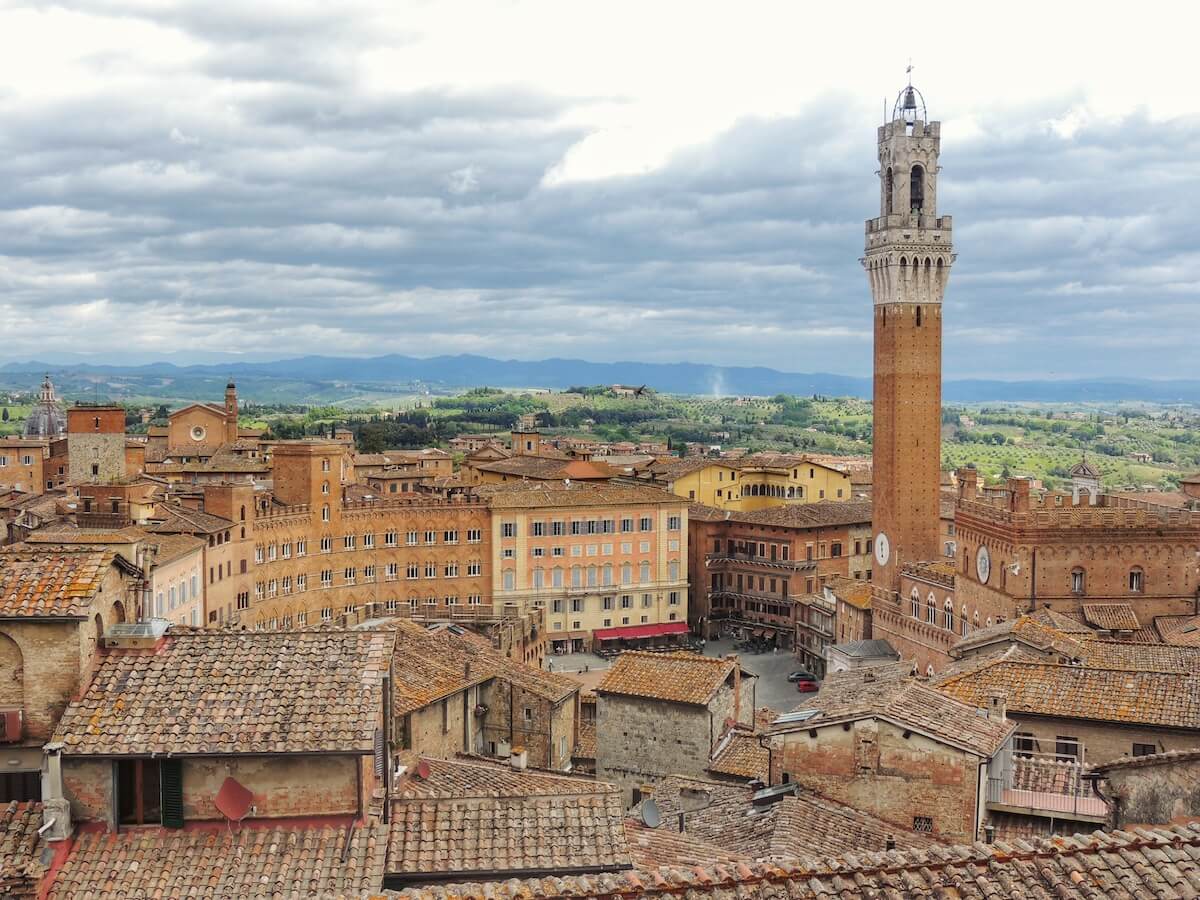
We might be biased, but we think that joining a tour is the best way to experience Siena - especially if you only have limited time in the city or are visiting on a day trip from Florence. Wandering the city’s medieval streets and taking in its historic atmosphere on your own is enchanting in its own right, but to truly uncover the best of Siena and to discover the rich stories that bring its past alive, you’ll need the expert guidance of a local guide, especially to help you navigate massive and labyrinthine monuments like the Duomo, Palazzo Pubblico and Santa Maria della Scala.
Why Take a Tour in Siena with Through Eternity?
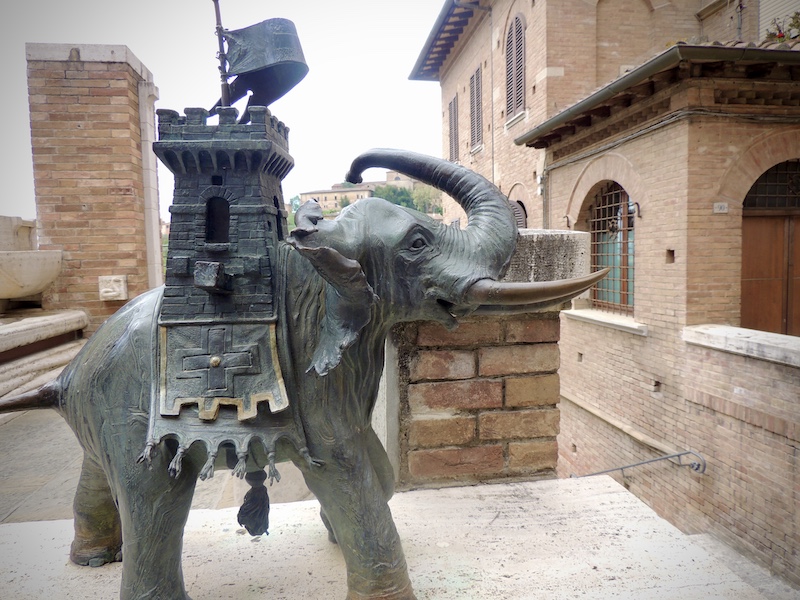
Our Siena tours take the hassle out of travel so you can focus on soaking up the city’s medieval charm. With tickets and skip-the-line access included, you’ll bypass the usual waits to access the sites, giving you more time to explore. Our guides are passionate about Siena’s history and culture, sharing stories and insider tips that go beyond what you'd find in a guidebook. Plus, if you’re looking for something more tailored, we offer custom tours built around your interests—whether you’re a history buff, art lover, or just curious about the city’s unique traditions.
How to Get to Siena
Reaching Siena by public transport is easy, with various bus and rail links connecting the city to other major destinations in Italy. That being said, as Siena isn’t connected to the country’s high-speed rail network it might take you just that little bit longer to get there - and you might need to make a transfer onto the local regional line. But trust us: your patience will be rewarded! Here’s how to get to Siena from Italy’s other major cities.
- From Florence: Florence is the closest major city, and you can easily reach Siena by bus or train from here. Frequent buses transit from Florence's main bus station to central Siena, making this a very convenient option that will take you around 90 minutes. Direct trains run from Santa Maria Novella in Florence to Siena’s train station, and take between 1.5 and 2 hours. The train station in Siena is a little ways outside the historic center, so you’ll need to take a city bus or walk for about 30 minutes to get there.
- From Rome: Currently there are no direct trains from Rome to Siena, so you’ll need to transfer at Chiusi. Overall the journey takes between 3 and 4 hours depending on the service. Alternatively, FlixBus, Itabus and others offer direct bus routes to Siena’s train station from Rome, taking about 3 hours.
- From Milan: Trains from Milan require a transfer in Florence, totaling around 4 hours of travel. You could also take a high-speed train to Florence and then continue by bus.
- From Bologna: Take a high speed train with Trenitalia or Italo to Florence and change here for the regional service to Siena. The journey will take around 2.5 hours.
The nearest major airport to Siena is Florence Airport (FLR), about 1.5 hours by car or 2 hours by bus/train. Alternatively, Pisa Airport (PSA) and Rome Fiumicino (FCO) are other options, with more international connections; from either airport, you can take a train or bus to Siena (occasionally direct, or via Florence.)
MORE GREAT CONTENT FROM THE BLOG:
- Everything You Need to Know to Visit Florence in 2024
- The Best Things to Do in Florence in 2024
- Where to Stay in Florence
- The Best Tours of Florence
- The Best Museums in Florence
- What to See in the Uffizi Gallery
- The Best Street Food in Florence
- Where to See Michelangelo in Florence
Through Eternity Tours offer a range of insider itineraries in Siena and Tuscany, so if you’re taking a trip to Tuscany this year check out our website or get in touch with our expert travel planners today!
